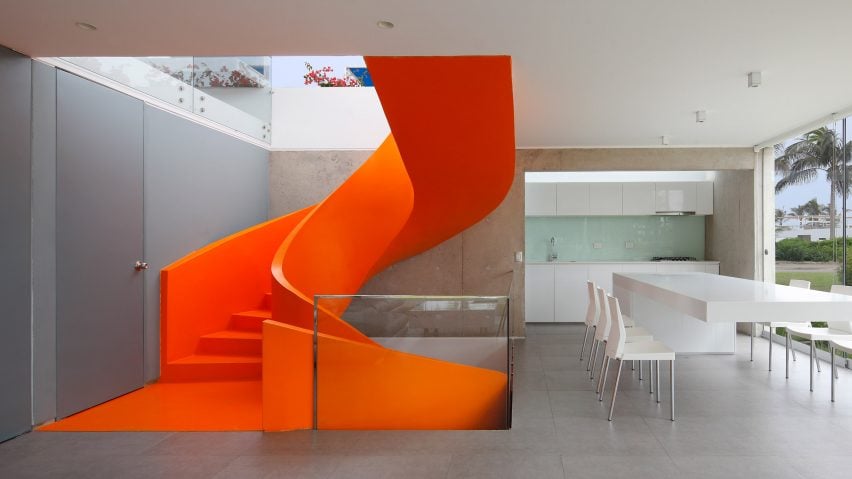
Ten home interiors animated by sculptural winding staircases
Sculpture-like concrete steps and a curving stair suspended above ground feature in this lookbook, which spotlights ten residential interiors with standout spiral or helical staircases.
Winding stairways are found in two styles known as spiral or helical stairs. Though they appear similar and both make use of tapered treads, spiral staircases are arranged around a central column, while helical staircases encircle voids.
Spiral staircases are also typically round in shape and used in interiors with limited space because they require less space than traditional linear stairs.
Meanwhile, helical stairs require a larger floor area and are therefore more suitable when making a staircase the focal point of a room. These systems commonly have wider elliptical shapes than the spiral versions.
This is the latest in our lookbooks series, which provides visual inspiration from Dezeen's archive. For more inspiration see previous lookbooks showcasing bedrooms with clever storage solutions, homes with decorative vaulted ceilings and offices with wooden bleachers.
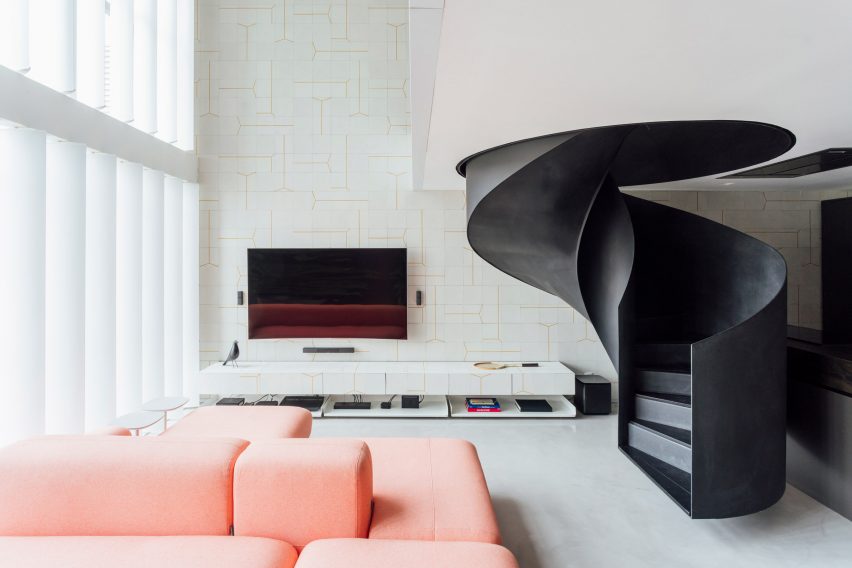
Loft Diego, Brazil, by Arquitetura Nacional
Arquitetura Nacional suspended this sculptural black staircase from the upper floor of an apartment in Porto Alegre so that its base doesn't touch the floor.
Crafted from folded steel and finished with plastic covering, the helicoidal structure helped the studio to transform the duplex into a more "fluid space".
Find out more about Loft Diego ›
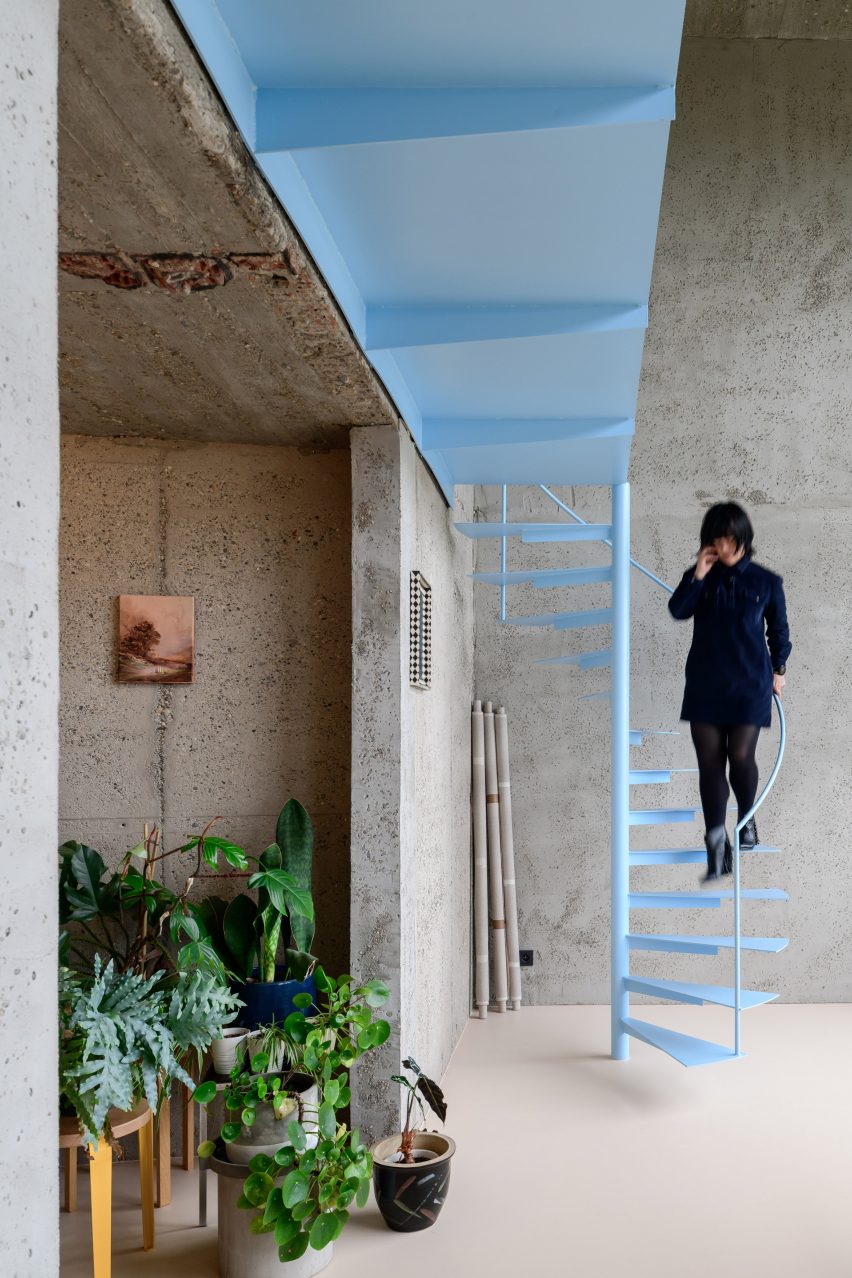
Riverside Tower apartment, Belgium, by Studio Okami Architecten
While renovating a duplex apartment in the brutalist Riverside Tower in Antwerp, Studio Okami Architecten introduced a pastel blue staircase between its two levels.
The position and form of the spiralling stair were chosen to help maximise floor space in the dwelling, while its bright finish creates a striking contrast to the exposed concrete behind it.
Find out more about Riverside Tower ›
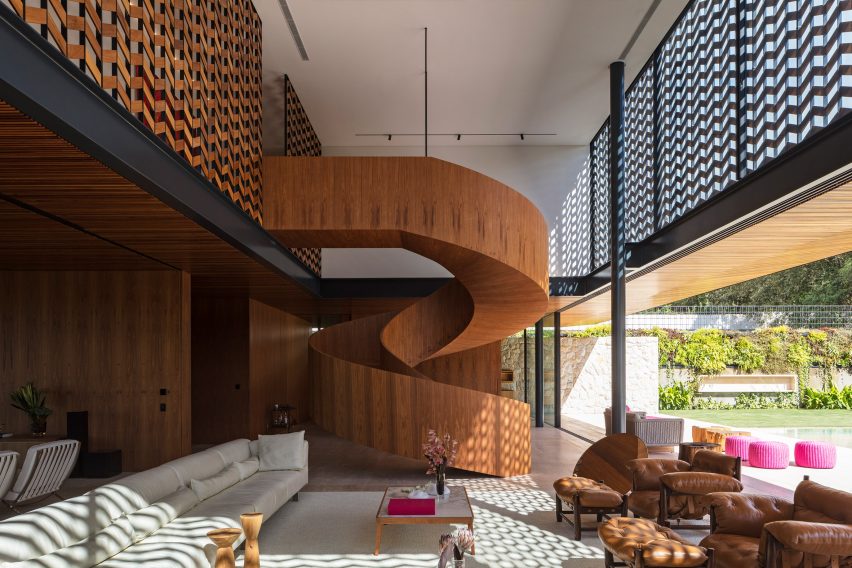
Casa Thomé Beira da Silva, Brazil, by Marcos Bertoldi Arquitetos
Wooden panels line this helical staircase, which Marcos Bertoldi Arquitetos created as a sculptural centrepiece for the double-height living room at Casa Thomé Beira in the south of Brazil.
Visible from the outside of the home, the staircase leads up to a series of bedrooms and is complemented by a wooden material palette that runs throughout.
Find out more about Casa Thomé Beira da Silva ›
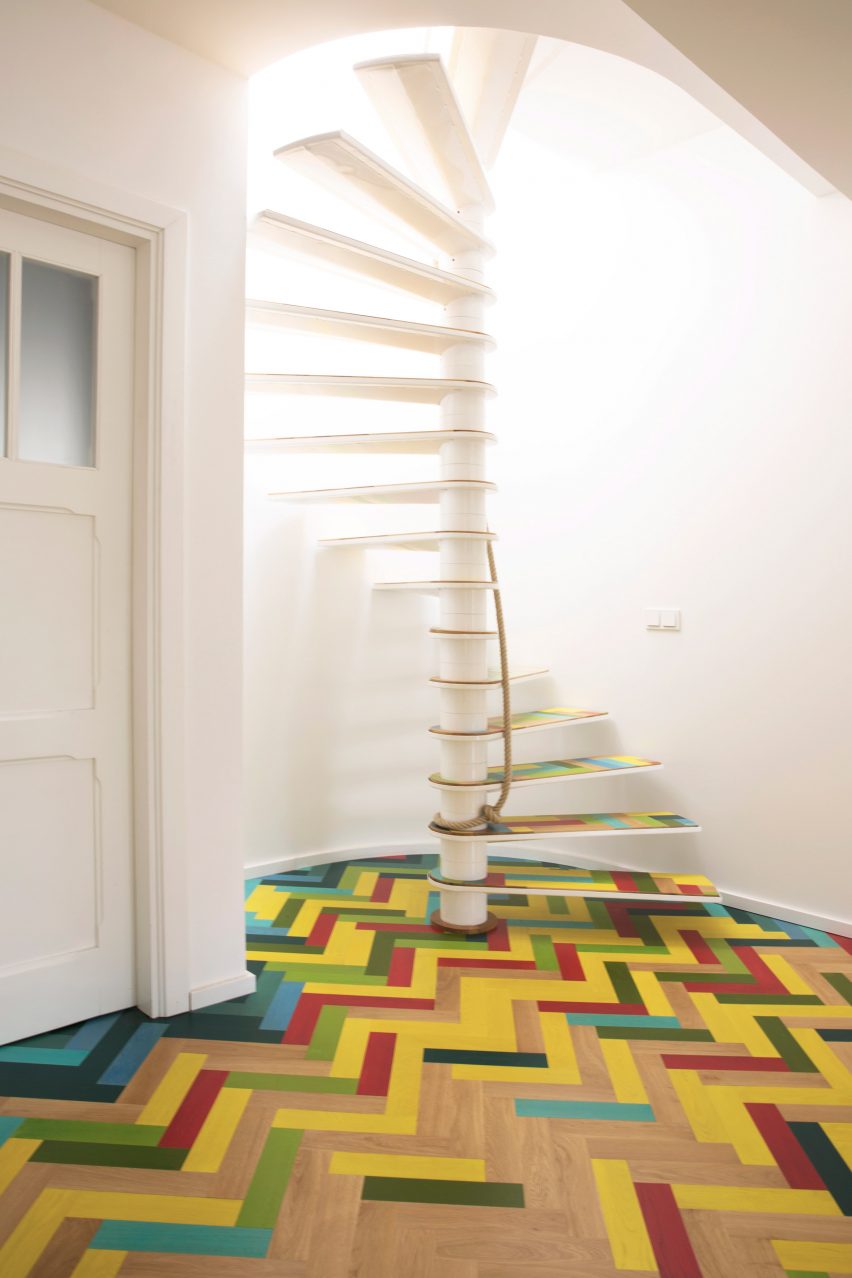
Colourful flooring and a rope balustrade animate this compact spiral staircase, which NOWlab designed to save valuable floor space in a small two-storey apartment in Berlin.
Enclosed by walls at the centre of the dwelling, the structure has slender wooden treads that fan out from a central column and complement the surrounding herringbone floors.

Casa Blanca, Peru, by Martin Dulanto
This self-supporting, fluorescent orange staircase twists up through the centre of the Casa Blanca residence in Lima to connect all three of its levels.
Made from reinforced concrete with a concealed iron core, it is designed by Martin Dulanto Sangalli as the focal point of the house that has an otherwise muted colour scheme.
Find out more about Casa Blanca ›
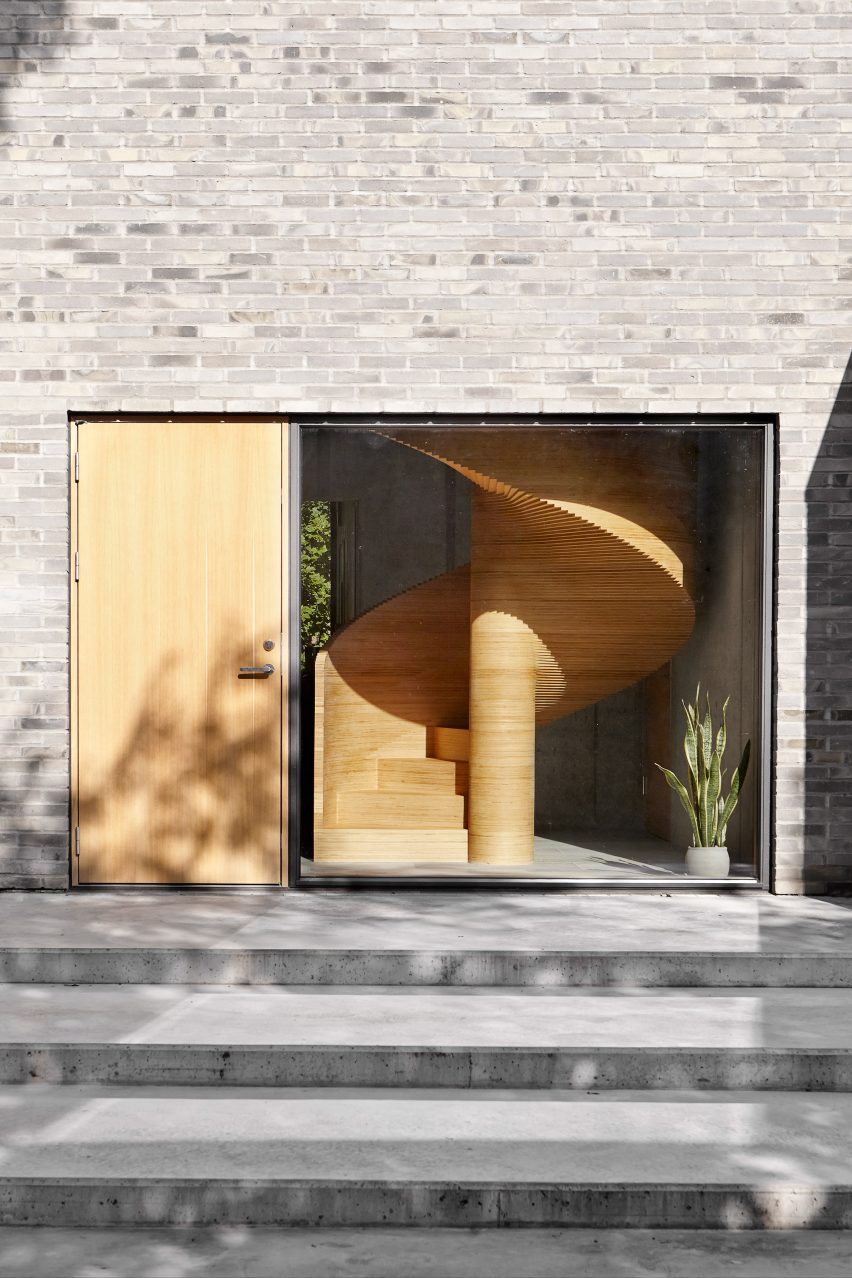
Tommy Rand's House, Denmark, by Tommy Rand
More than 600 pieces of CNC-cut plywood were glued together by hand to build this spiral staircase, located in the house that architect Tommy Rand designed for his family in Denmark.
Visible from the exterior of the dwelling, the curved form has been placed against a concrete backdrop that draws attention to the intricacy of its design and adds warmth to the home.
Find out more about Tommy Rand's House ›
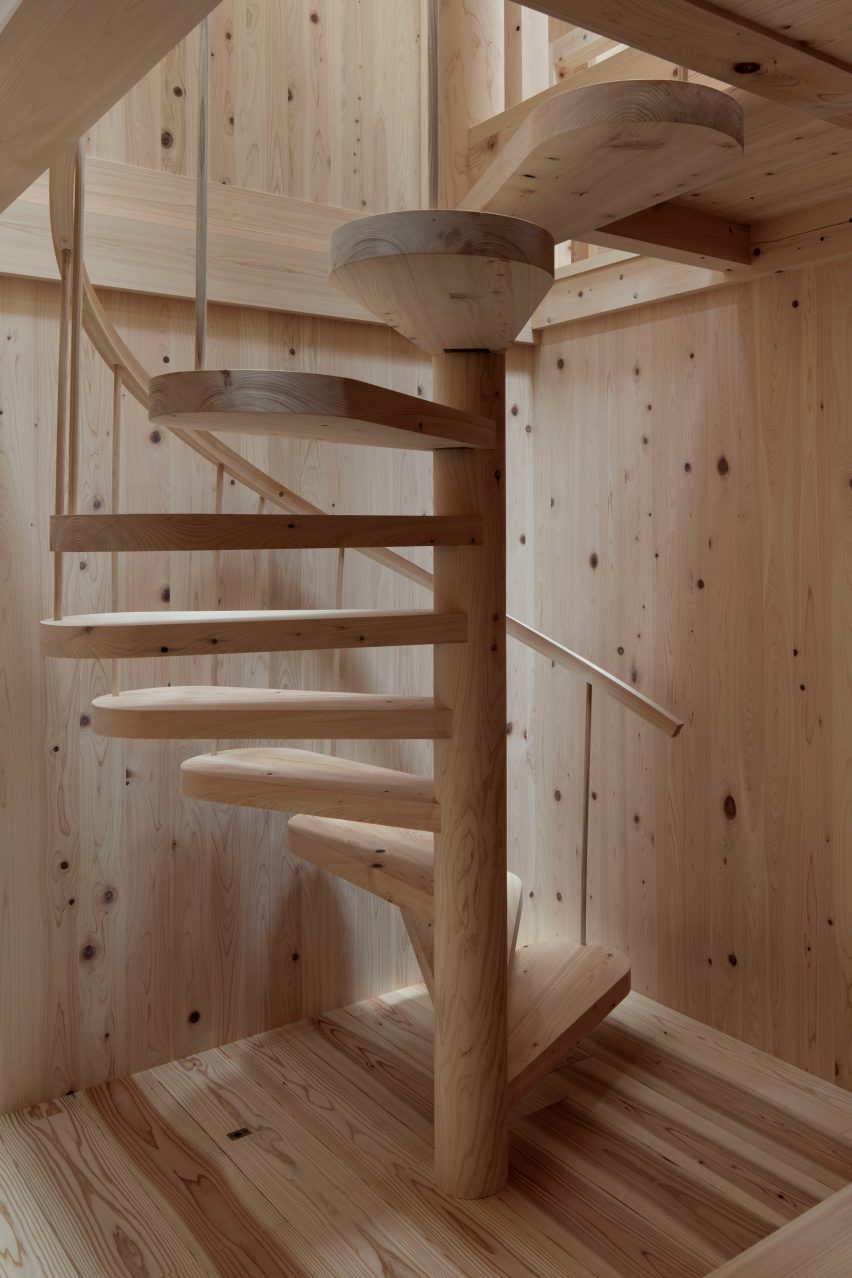
Ogimachi House, Japan, by Tomoaki Uno Architects
A helical staircase with petal-shaped wooden treads breaks up the gridded layout of this skylit house in Japan.
Resembling a flower when viewed from above, its form helps to save floor space while also providing access to four private rooms on the top floor.
Find out more about Ogimachi House ›
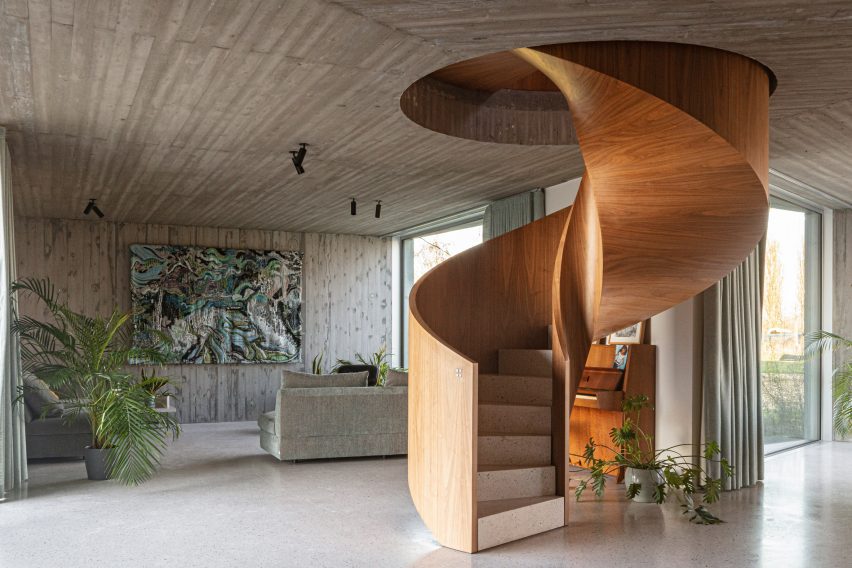
House Dede, Belgium, by OYO Architects
This wood-lined staircase sits at the heart of the cross-shaped plan of House Dede, which OYO Architects completed on the site of an old barn in Drongen.
Winding upwards through a circular hole that punctures a board-marked concrete ceiling, it forms a sculptural yet functional centrepiece for the house.
Find out more about House Dede ›
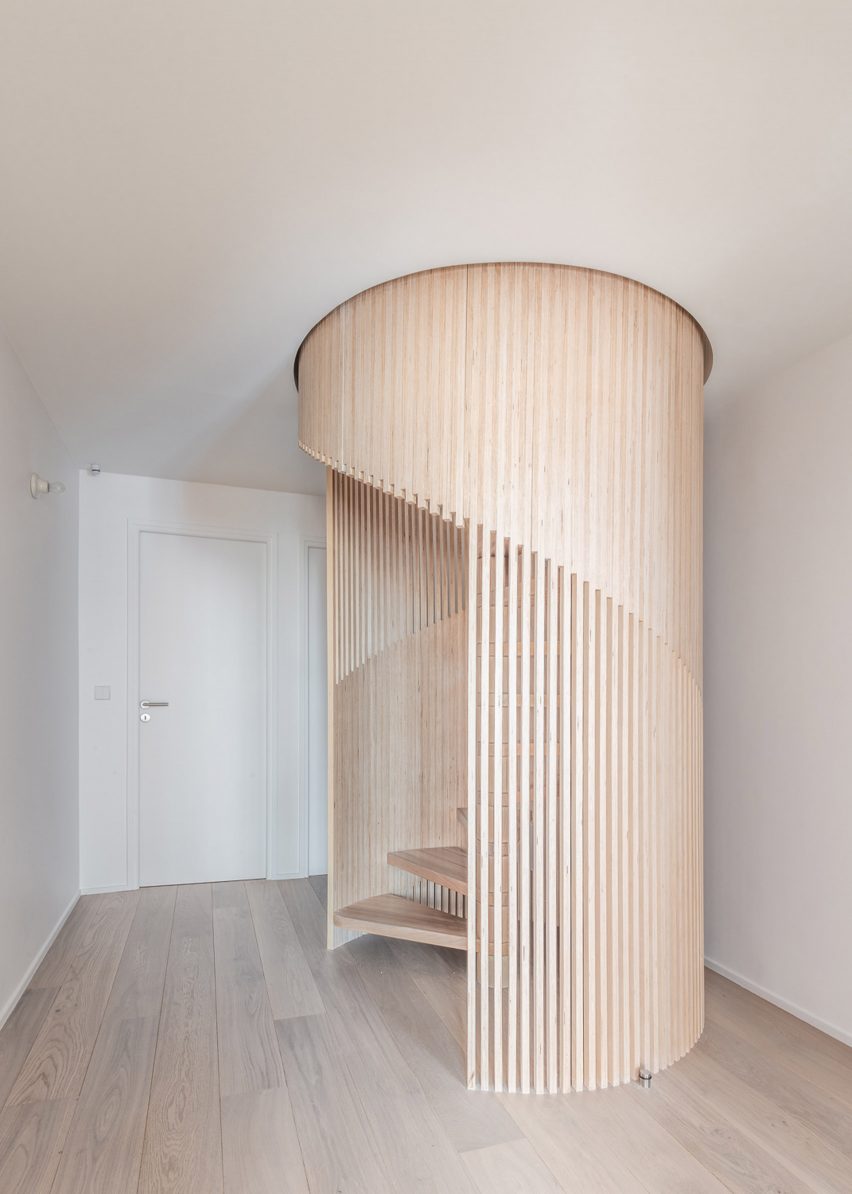
Sacha, France, by SABO Project
Thin slats of plywood and a bespoke baby gate that can be easily removed are key features of this cylindrical staircase, which is located in a refurbished apartment in Paris.
It was designed as part of a quirky yet "child-proof" renovation project that was carried out by SABO Project for a young couple expecting their first child.
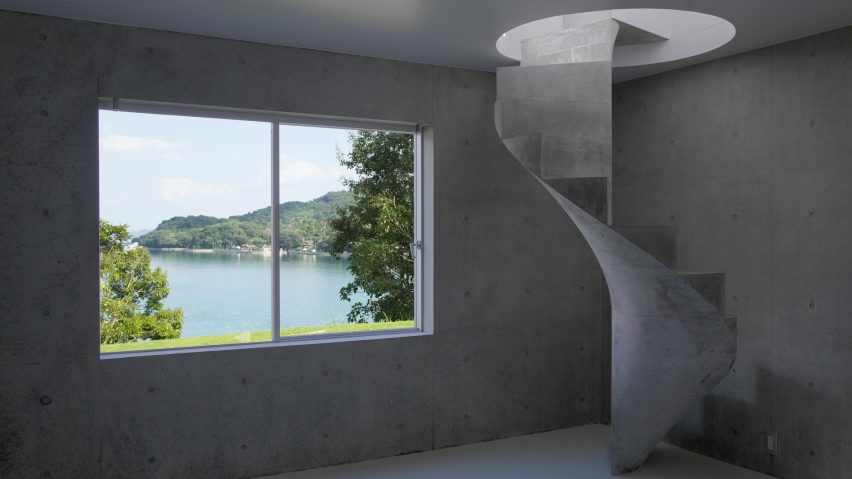
House in Akitsu, Japan, by Kazunori Fujimoto
This guardless staircase juxtaposes the cubic concrete forms of the House in Akitsu, which overlooks a seaside spot near the city of Higashihiroshima.
The twisting form, which links the home's bedrooms and living spaces, was engineered to negate the need for a central pillar and in turn, offers a sculptural look.
Find out more about House in Akitsu ›
This is the latest in our series of lookbooks providing curated visual inspiration from Dezeen's image archive. For more inspiration see previous lookbooks showcasing bedrooms with clever storage solutions, homes with decorative vaulted ceilings and offices with wooden bleachers.